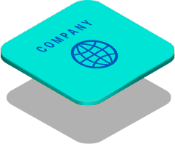- Why VisualVault?
WHY VISUALVAULT?
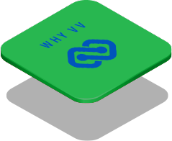
Redefining how you pay for (and how you use) a modern SaaS solution.
Features and capabilities built to simplify and accelerate usage of the platform.
Program visibility and forward-looking insight to your personal dashboard.
- Platform
PLATFORM

Bringing greater efficiency to critical document management processes.
A comprehensive set of solutions for content and process management.
Putting the power of solution development in the hands of platform users.
Increasing efficiency and accuracy, with workflow automation solutions.
Architected and optimized to protect your data and manage compliance.
- Solutions
solutions
A platform that’s ideally-suited to deliver the technical capabilities and functionality that counties, large cities, municipalities and state governments.
VisualVault’s competence in rapidly processing massive quantities of data securely and accurately makes it an ideal platform for mission-critical patient data applications.
Central to VisualVault’s appeal across the higher education market is the ease with which it integrates with existing technology solutions and consolidates data; delivering a single source of the truth.
In VisualVault, We know the industry, its intricacies and how to deliver the control and visibility into data and documents that studio management has been seeking as it works to bring greater efficiency to its operations.
Organizing information, streamlining processes, improving visibility and delivering analytics that give you the data you need to take your manufacturing operation to the next level.
Realize efficiencies, identify customer insights and create incremental opportunities by employing state-of-the-art data and process management solutions and advanced analytics.
Realize efficiencies, identify customer insights and create incremental opportunities by employing state-of-the-art data and process management solutions and advanced analytics.
- Company
HR Information Management & Automation
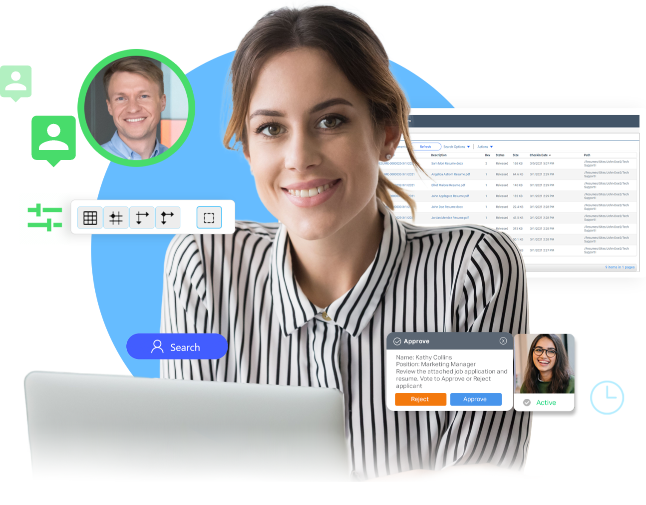
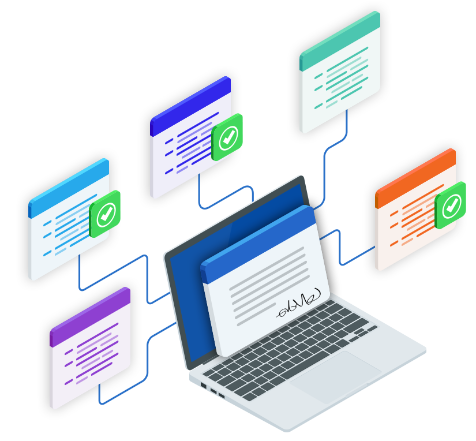
Accounting For All HR Documents
You’ve got a list of documents that you need checked off for every single employee in order to maintain compliance and to keep your corporate processes on track. With multiple documents, regular updates and new hires coming in, keeping track of the status of these documents for every employee is virtually a full-time job in itself.
VisualVault delivers simple functionality that allows you to track documents by employee and a workflow feature that automatically pushes out incomplete documents to employees for review and online signature.
Seamless Integrations with HRIS and ATS Systems
Because VisualVault was architected for the cloud, integration with external systems is typically a rapid process. And integration with these systems presents the opportunity to quickly and easily architect significant functionality that existing systems may not deliver.
For example, for one major retail client we created integrations with their existing systems to effectively automate their new employee onboarding process. With this solution, the ATS sends new applicant data to VisualVault and then VisualVault forwards a package to the applicant for review and Adobe Sign online signature. From there, HRIS integration allows documents to be auto-archived and a new Employee ID is issued. A big process turned into a tight and tidy solution.
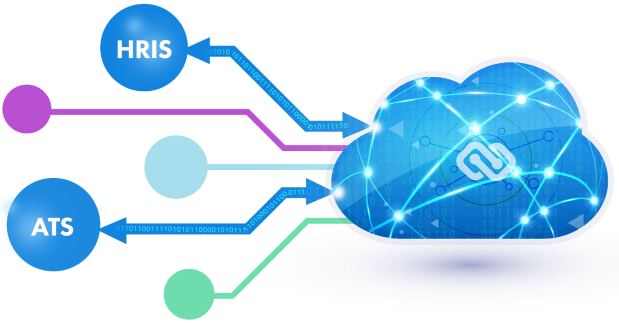
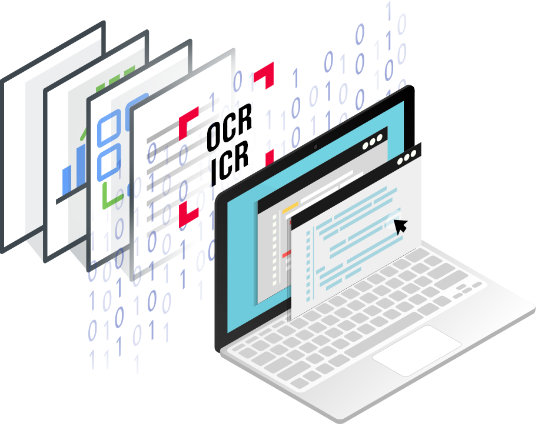
Turning Documents into Data
Many HR departments still rely on paper documents for certain processes. And although it may make sense for certain companies and certain processes, it does create problems. These documents and the data they contain ultimately create more manual processes – filing the documents, transferring data to a digital format, reporting, etc. And, of course, manual typically means slow and error prone.
In order to make the data in these documents usable, we employ intelligent character recognition (ICR) and optical character recognition (OCR) software to convert that unstructured data into structured, readable digital information. Once the information is digital, it is then consolidated into VisualVault, integrated with other data and yields a holistic view of all your HR content in one centralized digital platform.
Sophisticated HR Analytics Drive Business
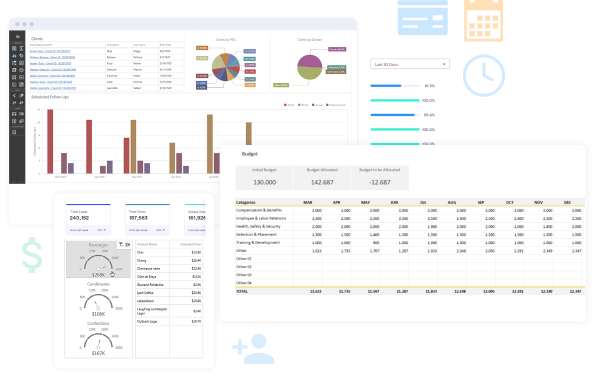
“That’s a Good Question!”
Below are some frequently-asked questions and short answers related to HR Information and HRIS integrations.
What is the information system for human resource management?
A Human Resource Information System (HRIS) is an integral part of the digital framework in Human Resource Management (HRM). It is a software solution that combines various processes to ensure the easy management of human resources, business processes, and data. This system allows for effective organization and access to employee data, including personal information, job and salary history, banking and tax details, insurance plans, time off requests, and more. It aids in streamlining HR functions such as recruitment, onboarding, payroll, benefits administration, performance reviews, and employee training.
While a Human Resource Information System (HRIS) provides a robust platform for managing a range of HR tasks, it might not fully satisfy the comprehensive information management needs of contemporary HR teams. For example, an HRIS might not efficiently handle data from forms filled out by employees, such as feedback surveys, self-assessment forms, or other custom forms that an organization may use to gather specific insights about the workforce. The system might also lack the flexibility to manage diverse data types and sources outside of its predefined fields.
Moreover, an HRIS might not adequately cater to broader information management needs that extend beyond the traditional HR functions. This could include integrating with other business systems, managing complex workflows, or providing customized analytics and reports that HR teams require. Therefore, to achieve a holistic view of employee data and a more comprehensive approach to HR management, organizations may need to consider integrating their HRIS with other information systems and tools such as VisualVault. This enables HR teams to gain deeper insights, make data-driven decisions, and more effectively drive organizational success.
What are the benefits of an integrated HR system?
An HR system that can effectively integrate and share data offers numerous benefits, enhancing efficiency, decision-making, and overall workforce management. Here are the key advantages:
- Increased Efficiency: By enabling seamless data integration and sharing across HR processes, such a system significantly reduces manual work. This helps to save time and resources, allowing HR professionals to focus on strategic initiatives rather than administrative duties.
- Data Accuracy and Consistency: Integrating diverse HR functions into a single, data-sharing network minimizes the risk of errors and inconsistencies. It eliminates the need for repeated manual data entry or transfers between multiple, disconnected systems, thereby enhancing data reliability.
- Informed Decision-Making: A system that can integrate and share data provides a comprehensive, unified view of employee data from various HR functions. This comprehensive data access enables more accurate analytics and reporting, thus supporting data-driven decision-making and strategic planning.
- Empowered Employee Experience: A data-integrated system often includes self-service portals where employees can update their information, request time off, view pay stubs, and more. This not only empowers employees but also improves their overall experience.
- Regulatory Compliance: Systems capable of integrating and sharing data can help ensure compliance with labor laws and regulations by maintaining consistent, accurate, and accessible records.
- Cost-Effective: Over time, a system that integrates and shares data can be more cost-effective than maintaining multiple, separate systems. This is due to the reduced administration time, lower risk of errors, and increased operational efficiency.
- Enhanced Communication:By facilitating data sharing, such a system improves interdepartmental communication. With easier access to necessary information, different departments can collaborate more effectively.
Overall, an HR system that can integrate and share data effectively can significantly enhance HR management, provide valuable workforce insights, and contribute positively to the overall performance of the organization.
What types of data can be captured and collected for HR?
Here are the key types of data that can be captured and collected for Human Resources:
- Personal Information
- Employment Information
- Performance Data
- Benefits and Compensation
- Time and Attendance
- Recruitment Data
- Learning and Development
- Employee Engagement and Satisfaction
- Health and Safety Records
However, it's important to note that not all HRIS are created equally or gather the same information. Integrating with a platform like VisualVault might extend the data capturing capabilities significantly. VisualVault allows for capturing custom data, using paper forms to collect information, scanning and extracting data to a database, or using custom online forms to gather required data. In addition, it enables HR departments to establish various types of automation, allowing real-time responses based on the data collected. This flexibility and adaptability make it a valuable tool for modern HR teams looking to optimize data collection and automation in their workflows.
In addition to its robust data capture and automation capabilities, VisualVault also offers comprehensive analytics and insights tools. The platform allows HR teams to create customized dashboards tailored to their specific needs. These dashboards can visualize and present data in an accessible, easy-to-understand format, providing real-time insights into various HR metrics and trends. This feature further enhances the decision-making capabilities of HR teams, enabling them to quickly respond to shifts in workforce dynamics and to strategize more effectively based on accurate, up-to-date data. This extensive functionality makes VisualVault not only a tool for data collection and automation, but also a powerful solution for HR analytics and strategic planning.
How can HRIS support HR analytics?
A Human Resource Information System (HRIS) consolidates and organizes vast amounts of HR data, providing a foundation for HR analytics. By centralizing this data, a HRIS enables the examination of key metrics and trends, fostering informed decision-making and strategic planning. However, it's worth noting that despite their importance, HRIS alone might not offer the extensive analytics capabilities that modern HR departments require.
While HRIS serves as crucial repositories of employee data and basic analytics, more advanced or custom analytics may necessitate the integration of additional tools. Platforms like VisualVault can integrate with existing HRIS to further enhance data analysis and insights. VisualVault's ability to pull data from an HRIS and present it in customized dashboards creates a "single pane of glass" view for HR teams. This gives them a comprehensive, real-time overview of their HR data, making it easier to monitor trends, measure performance, and make data-driven decisions. The combination of a robust HRIS and a powerful analytics tool like VisualVault can significantly empower HR departments in their analytics endeavors.
